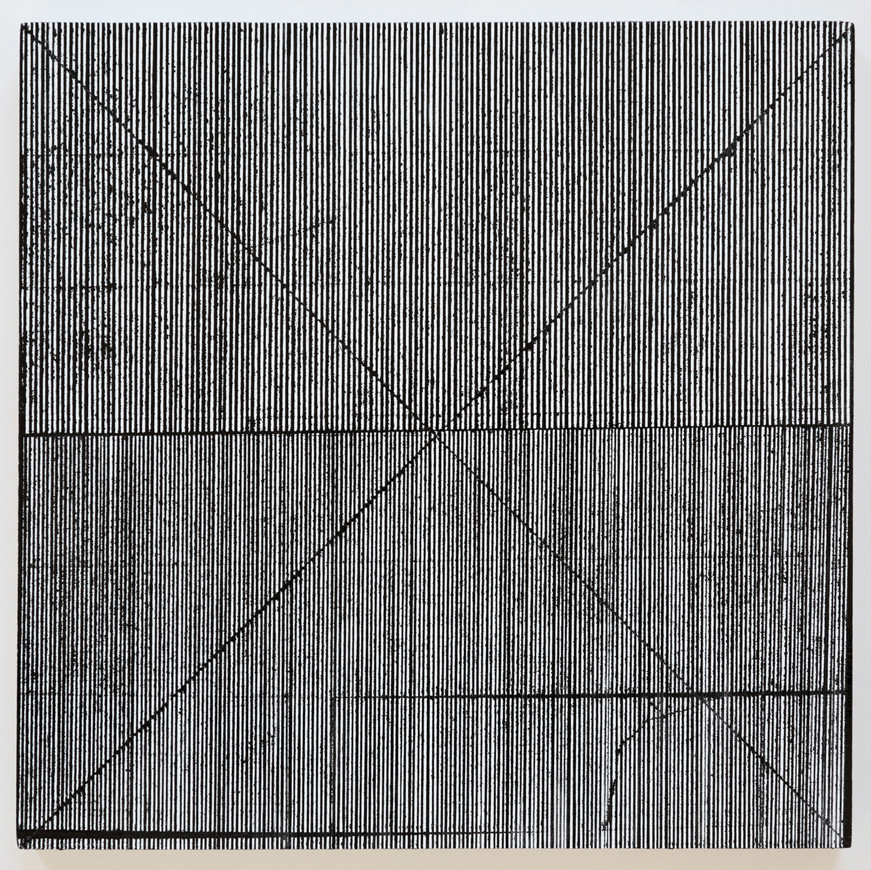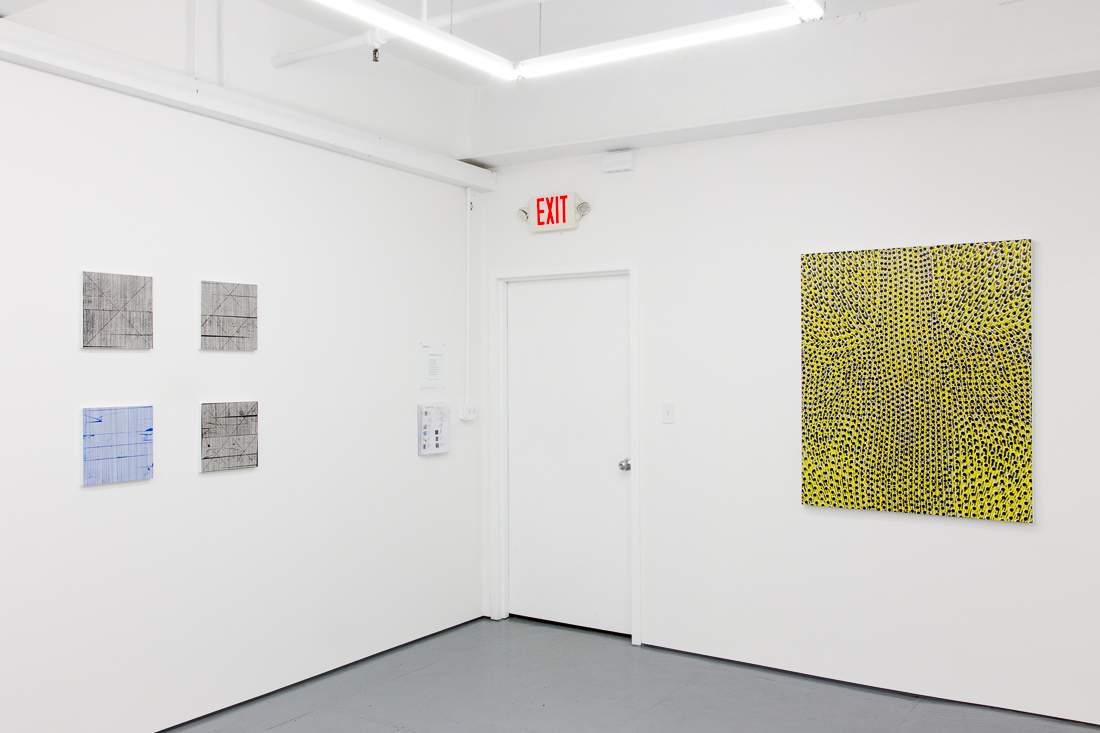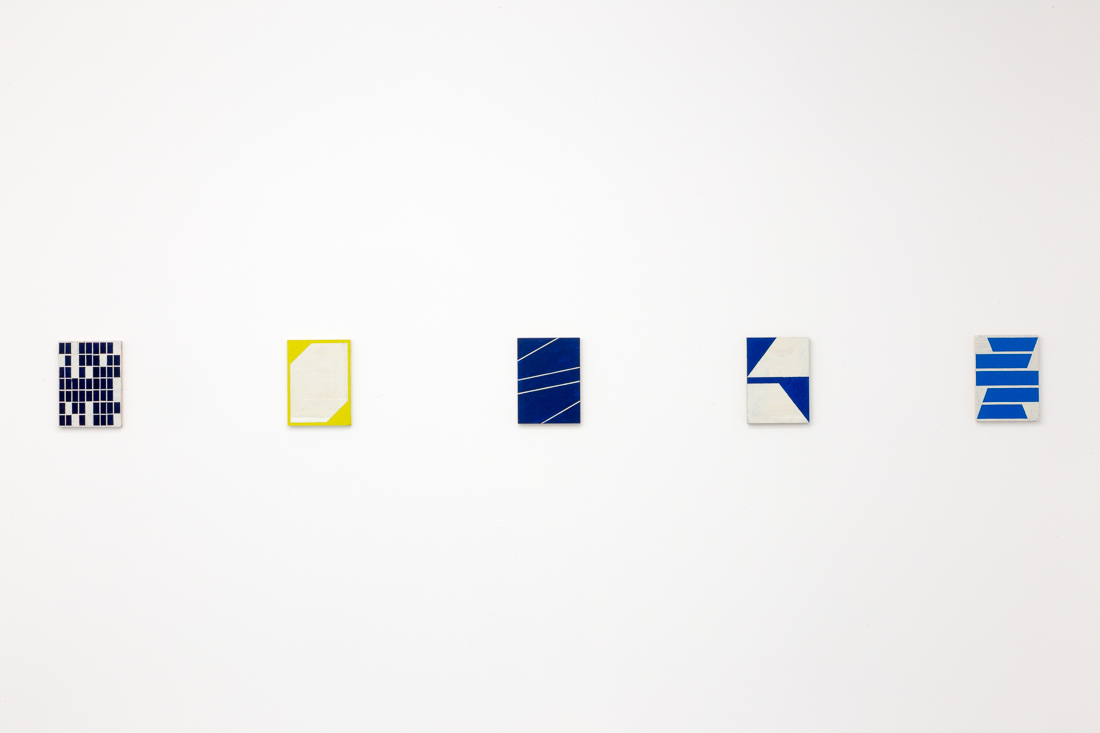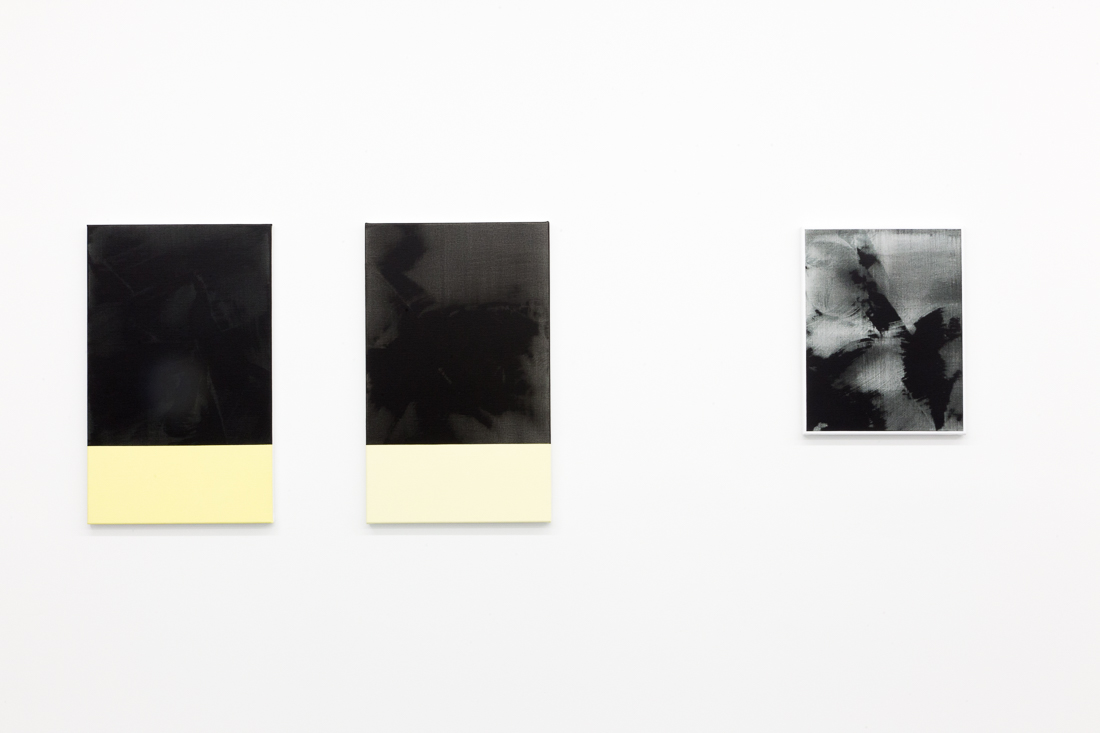Painting, More or Less...
AIMÉE TERBURG (NL) • ALAIN BILTEREYST (BE) • CHRIS FENNELL (USA) • DANIELLE MYSLIWIEC (USA) • EMMA LANGRIDGE (AUS) • MICHAEL ROUILLARD (USA) • SHAWN STIPLING (UK)
October 30 - December 6, 2015
Opening Reception: October 30, 2015 6 - 9pm
Painting, More or Less.. is an exhibition featuring artists from the US and abroad who use minimalist or maximalist, reductive or accumulative approaches in their painting practices.
The basis of painting is mark-making. Because of the enormous variety of approaches to mark-making throughout painting’s history, the mark-makers of today have a huge number of possibilities to choose from for inspiration and example.
The idea that everything has already been done in painting can therefore be viewed as liberating - advancing the notion that anything is possible and all is available, without the need for invention and without the constraints and condemnation that grew out of the critique of modernism.
On a larger scale, the Hegelian dialectic, thesis - antithesis - synthesis, is now obsolete. Hegel’s cultural formations of consciousness now play out on a micro level within the individual artist’s studio, with each artist’s highly subjective point of view as the only guiding measure. This consequently becomes a pattern in and of itself to be brought into the continuum of categorized history.
The painters in Painting More or Less.. employ seemingly opposing responses to painting - their mark making is presented with either a multitude of elements or a more limited number. These divergent approaches contributes to a wide array of possibilities informed only by each artist’s personal decisions and cumulative individual experiences, rather than the urge to conform to the latest currents.
Aimée Terburg uses chance and broad, sweeping gestures to create subtle changes in color and texture, highlighting the autonomy of each decision and each element within her paintings.
The graphic elements of Alain Biltereyst’s modestly sized abstractions have their basis in his everyday environment. Deliberate errors in paint application together with the pictures’ small size emphasize a subjectivity that resonates as a highly personal deviation from the familiar modes of hard-edge abstraction.
Chris Fennell utilizes a paper appliqué process to create radiating surfaces. Repeating rows of dots visually connect and morph from single units into optical networks that often allude to patterns found in nature.
Danielle Myzliwiec uses special tools to extrude paint onto her substrate in order to create sculptural elements. These literal forms, extending beyond the picture plane, upset the traditional understanding of painting as a receding spatial illusion.
The paintings of Emma Langridge reveal themselves at the end of her process, which consists of making numerous precise linear incisions in an applied film, and separating the positive and negative space. Bleeding paint and other anomalies that come out of the process are indicative of the artist’s hand, creating a refreshing counterpoint to her precise methodology.
With few elements, Michael Rouillard distills the basics of painting. Quadrants and grids are constructed with single or double lines whose intersections are emphasized with high contrast, usually in black. The spareness of the work highlights the subtle differences in varying shades of white and sizes of lines that make the compositions a play of variations on a theme.
Shawn Stipling makes precise spatial articulations on built up monochromatic surfaces that eliminate the evidence of the artist’s hand by reducing the appearance of brush marks. This suppression of touch focuses attention on to the minute details and intimate spaces, drawing the viewer closer to the artist.
The dual premise of this exhibition emphasizes that it is possible and permissible to have opposing elements in the same room; divergent thoughts that widen the discussion. Vastly different starting points, vanishing points, emphases, methodologies, aims, and perspectives, when taken together, broaden the spectrum and enliven the conversation instead of narrowing it into linear convention




















